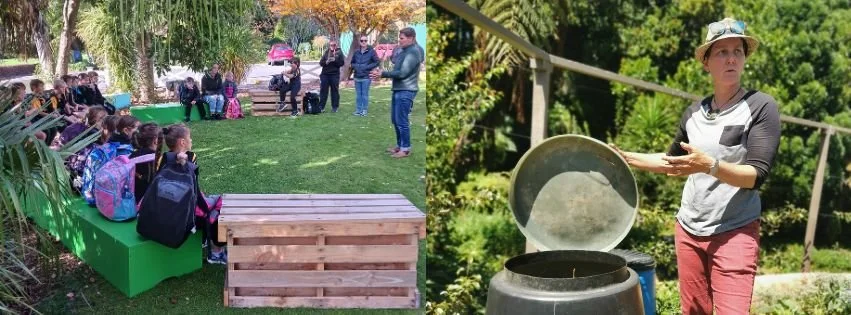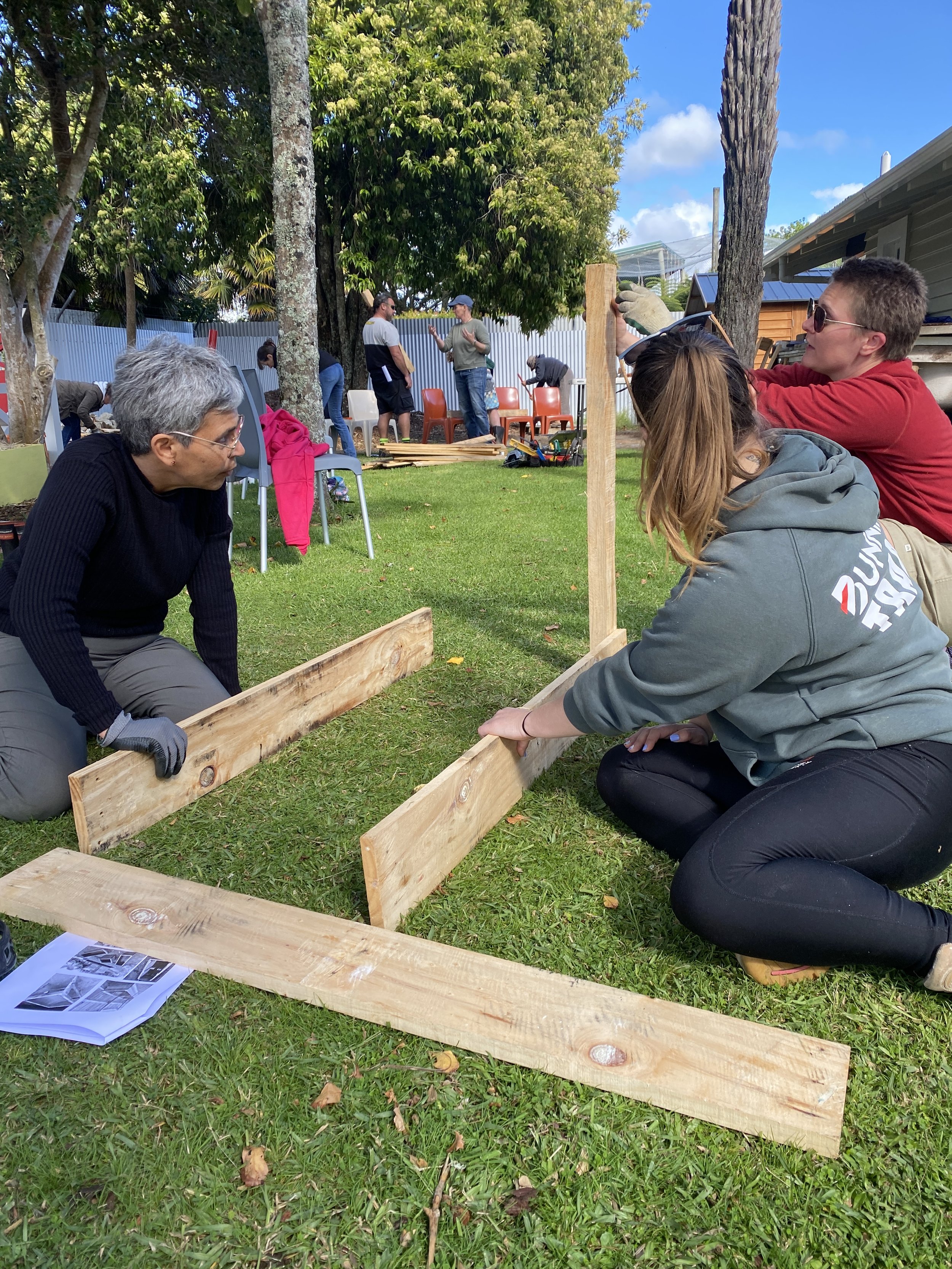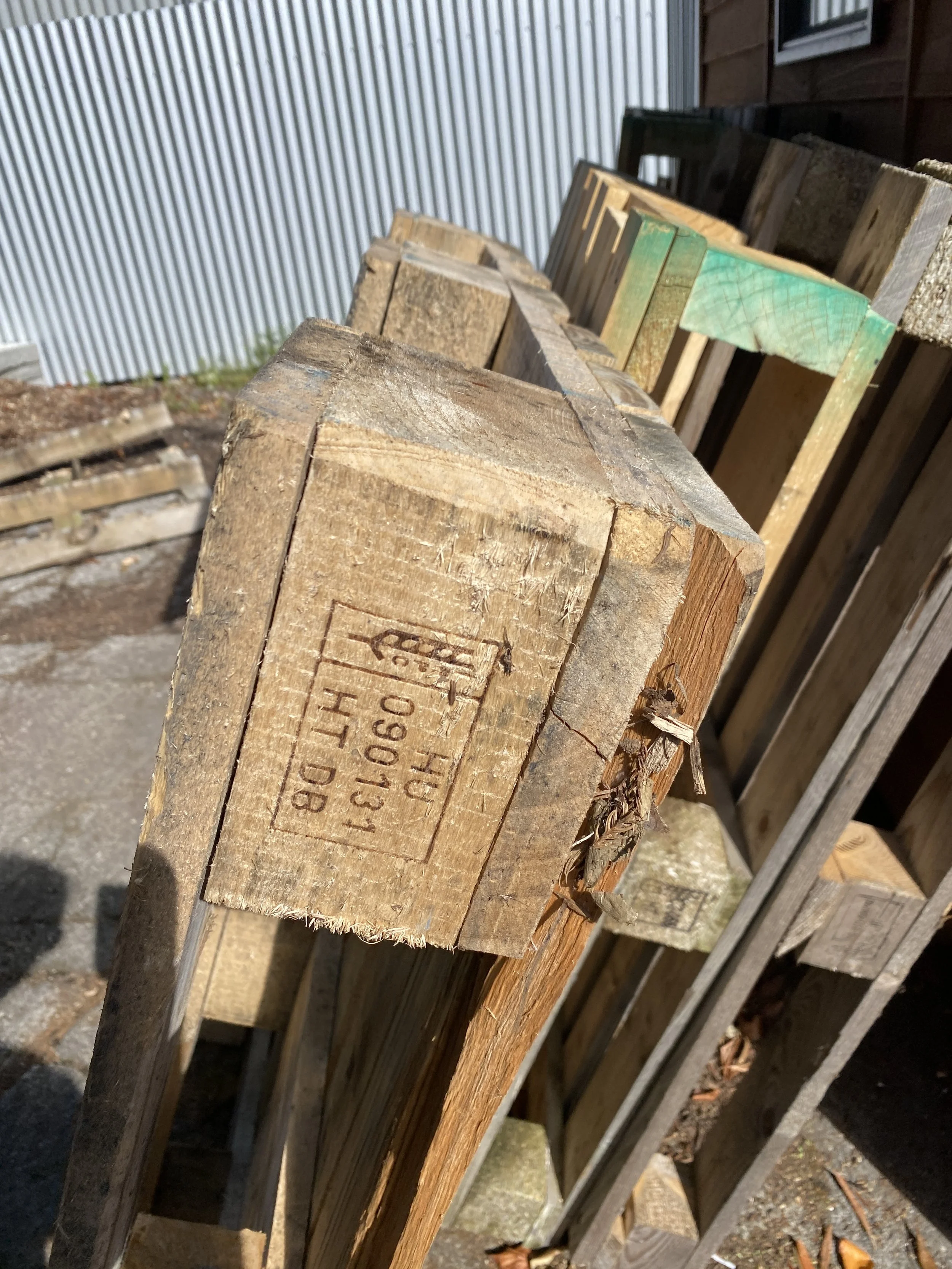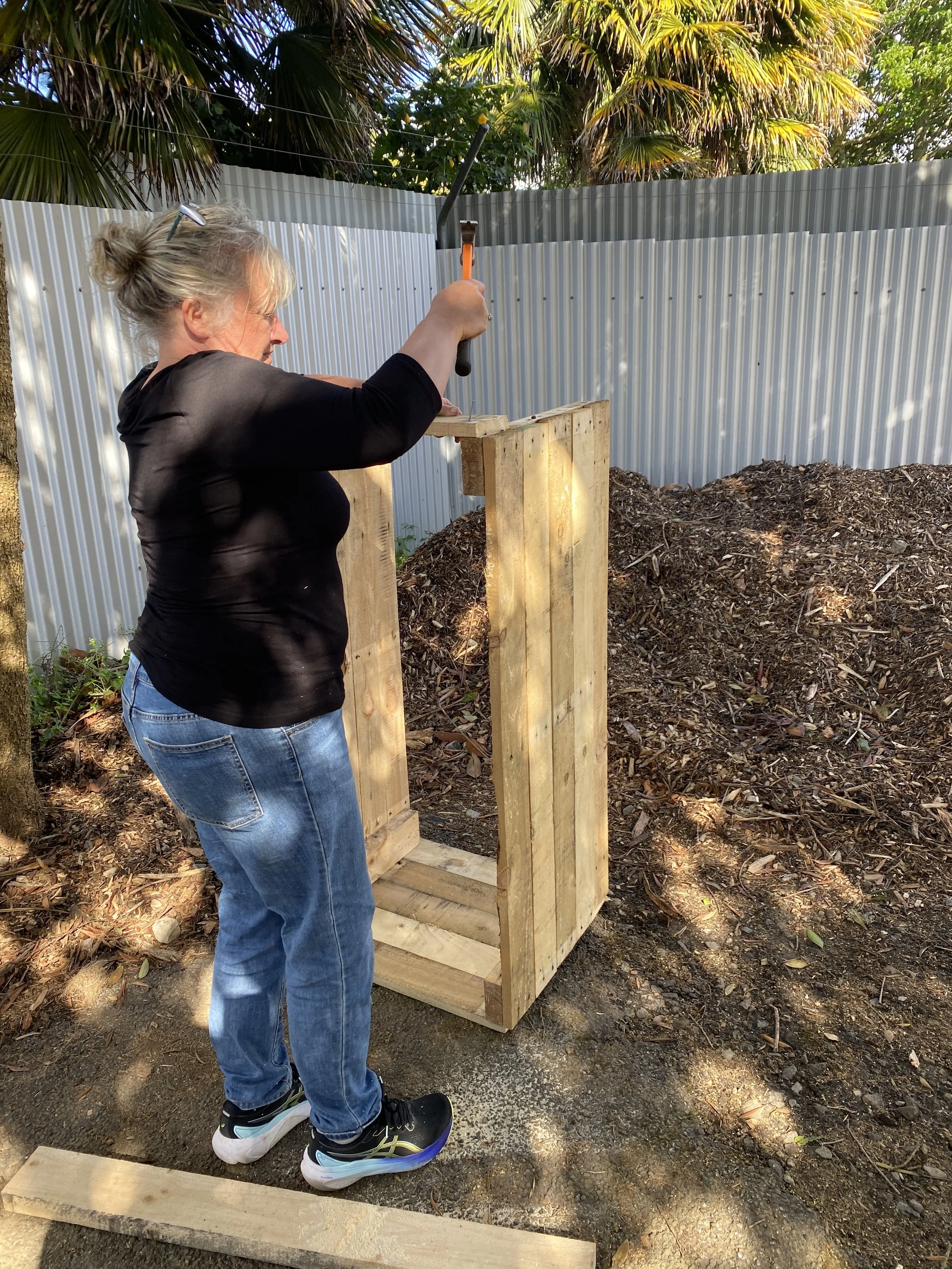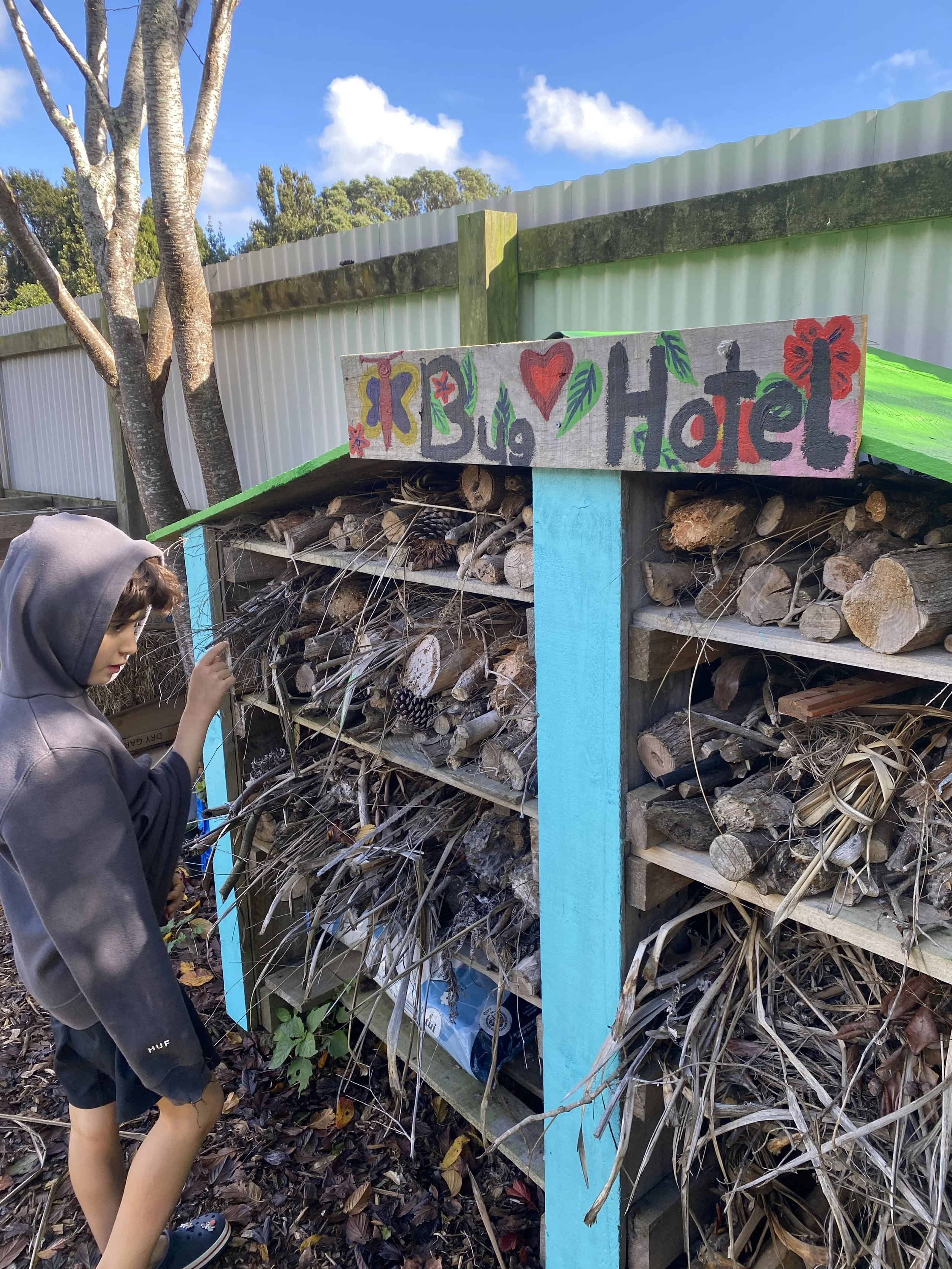Rejuvenating the Art of Repurposing in the Garden
Our sustainable gardening expert Mieke Verschoor has been busy running exciting workshops these past couple of months with a clear focus - on repurposing materials in the garden.
Not only are there considerable environmental benefits in doing this, but also there is joy!
The enjoyment in repurposing materials for the garden is found in discovering your creativity and innovative thinking, of doing something with your hands and making a physical object uniquely yours, and that has your personal touch.
Gardening is not only about cultivating plants, but also about creating a harmonious, enjoyable, creative and sustainable environment.
“Creativity is the process of putting your imagination to work and discovering what unique, original ideas you can come up with” - Mieke Verschoor
Mieke Verschoor, our talented, and inspiring Sustainable Gardens Expert in action!
The importance of repurposing materials in the garden is that it helps to reduce waste to landfill, giving new life to items that might otherwise be discarded. Not only that, but by reusing materials, you reduce the need for new resources, significantly lowering the environmental impact associated with manufacturing and transporting new goods.
One other, very important, benefit is that repurposing materials helps to keep gardening costs down, making growing food, and thus food resilience, more accessible and attainable.
Using broken concrete from a building site to create a herb spiral at The Hub Show Garden
Mieke has been offering increasingly popular workshops with a focus on repurposing materials for the garden, and supporting people with tools and workmanship tips to help build their confidence. This has included the Building with Pallets Workshops, Building a Herb Spiral Workshop and development of The Hub Show-garden and starting tours of the garden (workshop flyers below).
The popular Building with Pallets Workshop was a great opportunity for participants to build their own raised garden bed with the guidance and on-site assistance of Mieke.
In this workshop, participants learnt how to 'read' the stamps on pallets to know which to use, how to break up pallets without (much) splitting, using crowbars and pallet busters, and how to build a raised garden bed with the wood. There were other projects to choose from, such as a seat, wood box, table, bike stand or wood shed but most chose to stick with a garden bed.
“Start with copying a great idea, through the process you’ll grow into your own creativity, all you need is imagination and a pile of pallet wood” - Mieke Verschoor
For the Building a Herb Spiral Workshop, participants learnt how to source the best upcycled or ‘waste’ materials such as broken concrete, rocks, pavers or bricks and how to set up the spiral. This included choosing the best location and orientation, how to anchor the spiral, as well as learning about mixing sand/cement to the right consistency of concrete.
“It’s ideal to get as many herbs (or veggies) as possible in a small space. The created height differences provides a variety of growing conditions for all the herbs requirements.” - Mieke Verschoor
The Hub Show Garden Tours focus on showcasing 100% repurposed materials in use around a standard sized Taranaki suburban home/garden.
Anyone can stop by at The Hub (next to Brooklands Zoo) and have a look at all the various parts to this garden. The Hub garden includes the Herb Spiral (above), which is a work in progress, and many other colourful delights (images below) such as a bug hotel, a worm farm, herb and garden beds and even a small orchard.
Repurposing materials for gardening in Taranaki is a practice that combines creativity, sustainability, and practicality. By using materials like pallet wood and old bricks, gardeners can create beautiful, functional, and eco-friendly garden spaces.
Embrace the challenge of repurposing and contribute to a greener, more sustainable future.
Best Repurposed Materials to Use in the Garden:
Wood from Pallets
Benefits: Pallet wood is readily available, often free, and sturdy. It can be easily dismantled and repurposed.
Uses: Raised garden beds, compost bins, vertical planters, and garden furniture.
Metal and Wire
Benefits: Metal is strong and can be shaped into various forms. It is ideal for creating trellises and supports
Uses: Trellises, plant supports, and garden sculptures
Old Bricks, pavers, river rocks or broken up concrete
Benefits: these resources are durable, weather-resistant, absorb heat and provide excellent drainage. Mieke prefers broken concreat from a dug up driveway, as its easier to shape and break
Uses: Pathways, edging for garden beds, and building structures like herb spirals and raised beds
Plastic Bottles and Containers
Benefits: Plastic bottles are lightweight, versatile, and can be used to create mini greenhouses or irrigation systems.
Uses: Seedling pots, drip irrigation systems, hanging gardens and protective covers for young plants.
How to build a Herb Spiral
Herb spirals are a fantastic addition to any garden, providing a microclimate that supports various herbs and plants. They are space-efficient and aesthetically pleasing.
What you’ll need:
Broken concrete, old bricks or river rocks
Cement
Soil and compost
Herbs
Steps:
Select a Location: Choose a sunny spot in your garden. The herb spiral will thrive best with at least 6 hours of sunlight daily.
Prepare the Base: Lay a base of old bricks in a circular pattern, starting from the center and spiraling outwards. The diameter of the base should be around 1.2 meters.
Build the Structure:
Mix cement of choice as per instrcitions and start by creating a low retaining wall around the spiral base. Stack the bricks higher as you move towards the center, forming a raised spiral.
Ensure the height difference between the lowest and highest points is about 0.5 meters. This height variation creates different microclimates.
Fill with Soil: Add a mixture of soil and compost within the spiral structure. The soil should be well-draining, especially at the top where it will be driest.
Plant the Herbs:
Plant herbs that prefer drier conditions, like rosemary and thyme, at the top.
In the middle sections, plant herbs that like moderate moisture, such as parsley and sage.
At the bottom, plant moisture-loving herbs like mint and chives.

